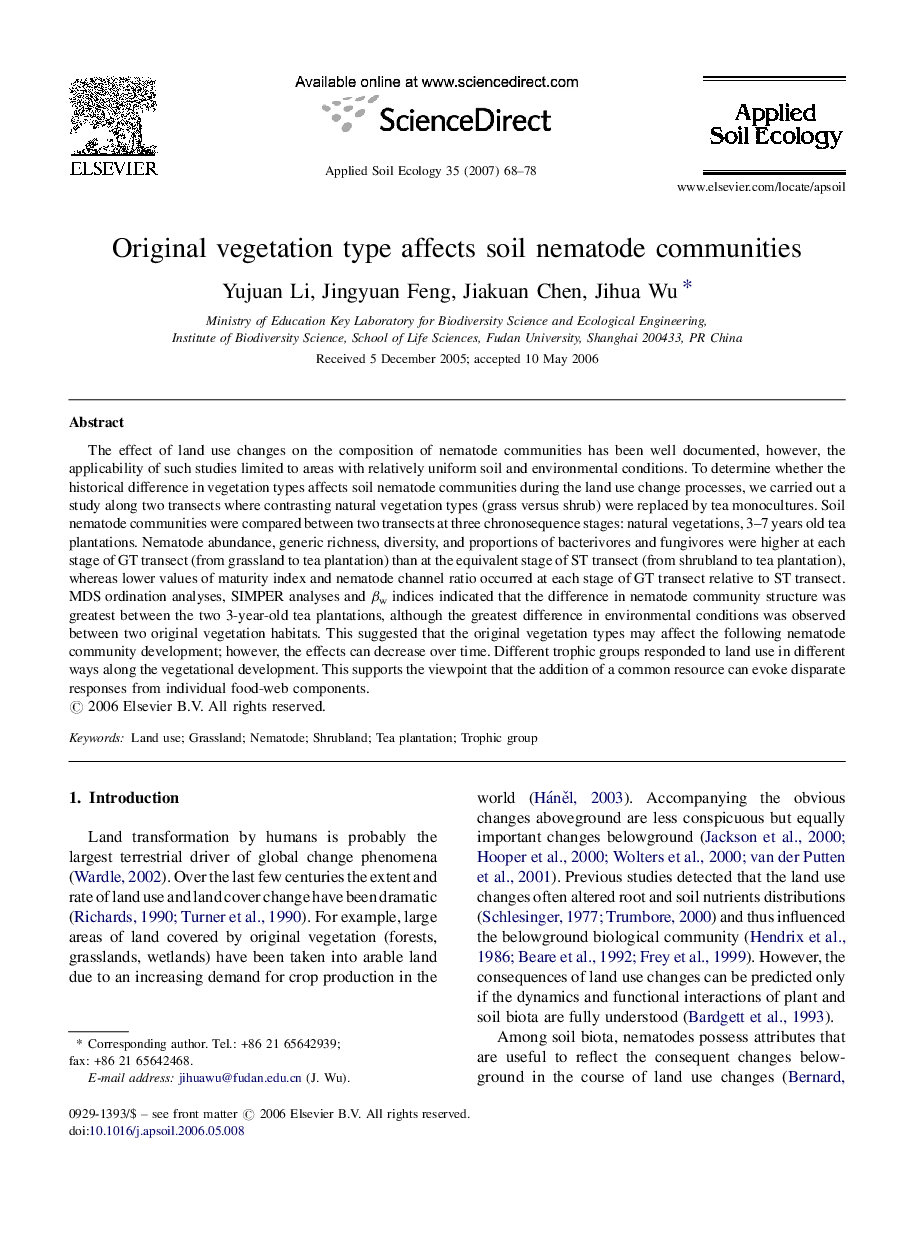| Article ID | Journal | Published Year | Pages | File Type |
|---|---|---|---|---|
| 4383522 | Applied Soil Ecology | 2007 | 11 Pages |
Abstract
The effect of land use changes on the composition of nematode communities has been well documented, however, the applicability of such studies limited to areas with relatively uniform soil and environmental conditions. To determine whether the historical difference in vegetation types affects soil nematode communities during the land use change processes, we carried out a study along two transects where contrasting natural vegetation types (grass versus shrub) were replaced by tea monocultures. Soil nematode communities were compared between two transects at three chronosequence stages: natural vegetations, 3-7 years old tea plantations. Nematode abundance, generic richness, diversity, and proportions of bacterivores and fungivores were higher at each stage of GT transect (from grassland to tea plantation) than at the equivalent stage of ST transect (from shrubland to tea plantation), whereas lower values of maturity index and nematode channel ratio occurred at each stage of GT transect relative to ST transect. MDS ordination analyses, SIMPER analyses and βw indices indicated that the difference in nematode community structure was greatest between the two 3-year-old tea plantations, although the greatest difference in environmental conditions was observed between two original vegetation habitats. This suggested that the original vegetation types may affect the following nematode community development; however, the effects can decrease over time. Different trophic groups responded to land use in different ways along the vegetational development. This supports the viewpoint that the addition of a common resource can evoke disparate responses from individual food-web components.
Related Topics
Life Sciences
Agricultural and Biological Sciences
Ecology, Evolution, Behavior and Systematics
Authors
Yujuan Li, Jingyuan Feng, Jiakuan Chen, Jihua Wu,
